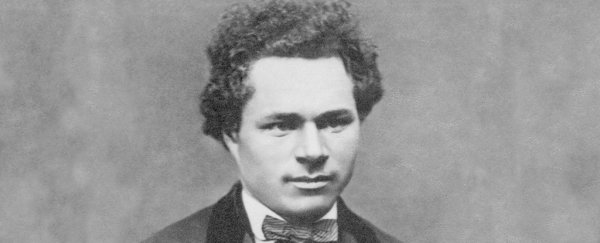Hans Jonatan was born in the Caribbean in 1784, migrated to Iceland in 1802, and died in 1827 – and scientists have just managed to reconstruct part of his genome from 182 of his descendants, even though Hans' remains have long since been lost.
This remarkable feat of reverse genetic engineering – the first time someone's genotype has been reconstructed using only descendants rather than their physical remains – reveals that Hans' mother was originally from somewhere in the Benin, Nigeria, and Cameroon region.
With Iceland having a mostly self-contained population until fairly recently, Hans' ancestry and history would have been very different from that of his neighbours. The study demonstrates that with enough genealogical and genotype data available, reconstructing a historical genome sequence like this is possible.
"To our knowledge, this study demonstrates the first use of genotype data from contemporary individuals, along with information about their genealogical relationships, to reconstruct a sizeable portion of the genome from a single ancestor born more than 200 years ago," says the international team of researchers in their paper.
Quite a bit of detailed research was required first – though these efforts were helped by Hans being the first man with African heritage to set foot in Iceland, and by the country having such a comprehensive genome database for its residents.
Having identified 788 of Hans' descendants, the scientists used single-nucleotide polymorphism (SNP) chips on 182 of them to identify DNA variations, slight changes in the biological blueprints laid down by our genes.
Whole genome sequencing, where the complete list of DNA instructions is charted, was carried out on 20 of the descendants, eventually leaving researchers with 674 chromosome fragments potentially linked to Hans' African heritage.
After another round of verification, using further genetic analysis and genealogy checks, the team was able to recreate 38 percent of Hans' maternal genome – the genetic blueprint passed down by his mother, Emilia Regina.
By comparing the genes inherited by Hans with worldwide databases, the researchers established that Emilia or her parents were probably transported as slaves from the west coast of Africa to the Americas and the Caribbean between 1760 and 1790.
Not a bad bit of detective work, considering Hans passed away nearly 200 years ago, and certainly a better result than you would get from a search on a family tree website.
Even without this new study, the story of Hans Jonatan is a remarkable one, recorded in the biography The Man Who Stole Himself.
Having been born into slavery on a sugar plantation in St. Croix, one of Denmark's Caribbean colonies, Hans was later taken to Denmark and enlisted to fight for the Danish navy.
He was ordered to return to the Danish West Indies, at which point he escaped to Iceland.
The fact that Hans' DNA was so unusual in Iceland certainly helped the researchers, but it's a fascinating demonstration of how genetic studies like this can retrace ancestries, even without direct access to the remains of the people involved.
"With extensive genealogical records, genotype data and divergent ancestry, genome reconstruction of an ancestor who died almost 200 years ago is relatively straightforward," conclude the researchers.
The research has been published in Nature Genetics.
